We humans have been shaped through our DNA, life, and death that came from the dust and where we will all return. Unbroken chains of ancient DNA that the records of our lost history that can be found in the dust into eternal life.
This secret science of humans created from dust, mud, clay has been written about and encoded into the history of many nations by many of the world’s greatest philosophers, historians, and scientists. From Ancient Egypt to the Phoenicians, Greece, China, and to the Abrahamic Scriptures of the Christians and Arabs, all claim from their earliest of histories that man was made or molded from the earth (dust, dirt, clay, or mud).
To many people who read these creation stories, they appear to be fiction told in the form of a myth. Impossible claims of our human origins that could never be true. But with the advent of modern science and some of the discoveries made in the last five decades, we are learning that these stories told for thousands of years are most likely true.
Even today, hardcore atheists and scientists like Richard Dawkins have suggested human beings were born when mud led to the creation of the famous DNA double helix and life itself. He had written that mud n the form of clay, may have learned to replicate, and eventually the process led to the creation of the famous DNA double helix and life itself.
This statement is coming from a man who built much of his career by criticizing God, religion, and believers who to him, qualify as a delusion, which he defined in his 2006 book, The God Delusion. In fact, he considers faith or belief that is not based on evidence—as “one of the world’s great evils”.
But regardless of Dawkins’ criticisms and his disbelief of religion are the facts that some of the great stories found in the Abrahamic religions are starting to be inadvertently verified by modern science as true. So much so they may cause the worlds’ most outspoken and famous atheist to be forced to do an about-face and recognize the truths found in the Scriptures to become not just a believer, but a knower.
As I explained in my previous article, The History of Humans Created From Mud and Clay, one of the earliest writers to detail this science of what is called Môt was the Phoenician historian and a priest of Byblos (City of the Book/Bible), Sanchuniathon (Phoenician: 𐤎𐤊𐤍𐤉𐤕𐤍), whose works were later translated by Philo of Byblos into Greek. Sanchuniathon refers to a great wind which merged with its parents, and that connection was called ‘Desire’ (πόθος). From its connection, Môt or Mud was produced from the fermentation (putrefaction) of a watery mixture, and out of this came every germ of creation and the generation of the universe including animals and humans.
From the teachings of Môt or Mud by Sanchuniathon, and the various histories from almost all cultures of the world telling a very similar story, we have various philosophers, scientists, and authors who have speculated and commented on this subject. The original belief was that various insects and animals could be spontaneously generated from putrified (fungal colonized/rotting/decayed) matter.
Writing in the 17th century, theologian and historian, Alexander Ross, had said;
“[May one] doubt whether, in cheese and timber, worms are generated, or, if beetles and wasps, in cow’s dung, or if butterflies, locusts, shellfish, snails, eels, and suchlike be procreated of putrefied matter, which is apt to receive the form of that creature to which it is by the formative power disposed. To question this is to question reason, sense, and experience. If he doubts of this, let him go to Egypt, and there he will find the fields swarming with mice begot of the mud of the Nylus [Nile], to the great calamity of the inhabitants.” (Alexander Ross, Arcana Microcosmi, 1652.)
Charles Darwin stated in The Origin of Species that “all the organic beings which have ever lived on this Earth may be descended from some primordial form”. In 1837, Darwin was convinced that “the intimate relation of Life with laws of chemical combination, and the universality of latter render spontaneous generation not improbable” but he rejected the idea that putrefaction of preexisting organic compounds could lead to the appearance of organisms. As he wrote in 1839 in his Fourth Notebook, “My theory leaves quite untouched the question of spontaneous generation.”
The German geologist Heinrich George Bronn, who translated Darwin’s The Origin of Species, in 1860, added another chapter of his own to the book discussing spontaneous generation in the context of Darwin’s theory. Shortly thereafter, Bronn published an essay arguing that Darwin’s theory was incomplete until it could account for the origin of life, in which he provided the research of Priestley, Pouchet, and others who have provided evidence of spontaneous generation.
The famous British biologist, Thomas Henry Huxley, also known as “Darwin’s Bulldog” for his advocacy of Charles Darwin’s theory of evolution asserted that life could be generated from inorganic chemicals in his book Protoplasm: The Physical Basis of Life (1869). The British physicist John Tyndall in his “Belfast Address” of 1874 also stated that life could be generated from inorganic chemicals.
What is fascinating as it relates to our modern era is that science has already validated Sanchuniathon’s theory that all life came from the fermentation (putrefaction) of a watery mixture or what we simply call “molds or fungi.” For example, in 2003, researchers at the Howard Hughes Medical Institute and Massachusetts General Hospital showed that clay helps RNA form. Harvard Medical School Professor of Genetics Jack Szostak said, “It’s exciting because we know that a particular clay mineral helps with the assembly of RNA.”
Today, all living organisms store and transmit hereditary information using both DNA and RNA composed of four kinds of subunits known as nucleotides that determine the sequence of amino acids in proteins, which is the central mechanism in all of biology. (The Origin of the Universe, Earth, and Life)
Experiments conducted under conditions intended to resemble those present on primitive Earth have resulted in the production of some of the chemical components of proteins, DNA, and RNA. Some of these molecules also have been detected in meteorites from outer space and in interstellar space by astronomers using radio-telescopes. Scientists have concluded that the “building blocks of life” could have been available early in Earth’s history.
A 2013 study found that clay (dried mud) might have been the birthplace of life on Earth. Researchers from the Kavli Institute at Cornell for Nanoscale Science discovered that clay forms a hydrogel — a mass of microscopic spaces capable of soaking up liquids like a sponge. Over billions of years, chemicals confined in those spaces could have carried out the complex reactions that formed proteins, DNA, and eventually all the machinery that makes a living cell work, which protected those chemical processes until the membrane that surrounds living cells developed.
The researchers told the journal Scientific Reports that clay acts as a breeding laboratory for tiny molecules and chemicals which it ‘absorbs like a sponge’ and over billions of years the chemicals react with each other to form proteins, DNA and, eventually, living cells.
It is important to understand that it is not the actual particles of dirt or dust that mix with water to become clay that forms all life, but it is most likely the microbes that make up the earth’s soils that create life forms. Dust doesn’t absorb nutrients and or DNA. It is the microrganisms within and that make the dust that are able to absorb all matter aropund them.
This why researchers have discovered that it was most likely fungi that first colonized the surface of the earth leading to the beginnings of a soil system that still functions today. Fungi were some of the first complex life forms on land, mining rocks for mineral nourishment, slowly turning them into what would become soil. Fungi probably colonized the land during the Cambrian, over 500 million years ago, (Taylor & Osborn, 1996).
According to an article published on CBC.ca, “Fungi Are Responsible For Life On Land As We Know It.”
“Fungi are absolutely remarkable chemists,” says McMaster University biochemistry professor Gerry Wright. Fungi produce molecules that humans still can’t reproduce in a lab, and we’re only beginning to scrape the surface of what we can learn from them.
“[Fungi] are the garbage disposal agents of the natural world,” according to Cardiff University biosciences professor Lynne Boddy. “They break down dead, organic matter and by doing that they release nutrients and those nutrients are then made available for plants to carry on growing.”
“It’s how everything is reborn,” says Dunn. “So that this entire web of life is connected and it’s connected through the fungi.”
In short, fungi eat death, and in doing so, create new life.
Fungi hyphae form mycelium that connects trees and plants in an underground fungal highway — called the wood-wide web — transporting nutrients and sending danger signals.”
A 2006 paper published online by the journal Science said, “The evolutionary innovation and expansion of land biota could permanently increase [chemical] weathering intensity and [clay] formation, establishing a new level of organic carbon burial and oxygen accumulation.”
In 2009, a study published by The New Scientist suggested that the building blocks of DNA can form spontaneously from chemicals thought to be present on the primordial Earth and that DNA could have predated the birth of life. The researchers at by the University College London generated RNA using chemicals that probably existed on the early Earth showing that RNA may have formed spontaneously – powerful support for the idea that life began in an “RNA world”.
The New Scientist had stated; “Conventional wisdom is that RNA-based life eventually switched to DNA because DNA is better at storing information. In other words, RNA organisms made the first DNA.
If that is true, how did life make the switch? Modern organisms can convert RNA nucleotides into DNA nucleotides, but only using special enzymes that are costly to produce in terms of energy and materials. “You have to know that DNA does something good for you before you invent something like that,” Switzer says.
He says the story makes more sense if DNA nucleotides were naturally present in the environment. Organisms could have taken up and used them, later developing the tools to make their own DNA once it became clear how advantageous the molecule was – and once natural supplies began to run low.
“Organisms could have used naturally occurring DNA, then developed the tools to make their own”
Early organisms must have scavenged for materials in this way, says Matthew Levy of the Albert Einstein College of Medicine in New York City. “The early Earth was probably a bloody mess,” he says, with all manner of rich pickings on offer.
More recently, researchers analyzing samples from muddy sites in the western United States discovered that novel DNA structures appear to scavenge and ‘assimilate’ genes from microorganisms in their environment. These extra-long DNA strands, which the scientists named in honor of the fictional Star Trek ‘Borg’ aliens who assimilate the knowledge and technology of other species.
Jill Banfield, a geomicrobiologist at the University of California, Berkeley, had said, “We started off with a piece of mud and 10 trillion pieces of DNA”.
According to Cal State Berkley, “One sample, taken from the mud on her property, contained a gene-filled stretch of DNA almost 1 million bases long—and more than half the genes were novel. This linear stretch of DNA also had a particular pattern of bases at its beginning and end, distinct stretches of repetitive DNA between its genes, and two places along the sequence where DNA duplication could begin—which indicated the Borg could make copies of itself. Together, this suggested it was not just a random concoction of genes.”
Borgs are DNA structures “not like any that’s been seen before”, says Brett Baker, a microbiologist at the University of Texas at Austin. Other scientists agree that the find is exciting, but have questioned whether Borgs really are unique, noting similarities between them and other large ECEs.
I recently reported on a new study that found bits of genetic code (DNA) in tiny particles of dust that are the building blocks for all vertebrates, including humans. The researchers found that these bits of genetic code have been scrambled and placed on larger chromosomes discovering that these tiny ‘specks of dust’ are actually important building blocks for all vertebrates.
Last but not least, within the dust found in our modern homes is human skin and DNA. In fact, it is one of the main components of all household dust.
A 2008 study found that environmental samples from indoor surfaces of dust are composed largely of human skin cells and have been documented to contain roughly tens of micrograms of total DNA per gram of dust. The researchers found that human DNA was detected in 97% of 36 dust samples.
Humans shed dead skin cells in the millions every day. These decaying flakes of skin land all around you where you live in your home or work that are then fed upon by the various microscopic organisms such as fungi and dust mites whose job is to eat decaying matter.
A newly discarded skin scale is ‘the perfect food for fungi and dust mites who thrive on decomposing organic matter.
Scientists believe that fungi may either constitute a food supplement for mites or may have an indirect effect by decomposing human dander, thus making it more accessible for dust mites. There is a mutual relationship between fungi and HDMs.
Here is an image of fungal hyphae Fungal emerging from house dust mite poop/droppings.
With the above scientific evidence and the history told by almost all cultures around the world of humans being created and molded by the dust, it is difficult to maintain that we are the product of some chemical reaction. Our DNA and the science of all life on earth tell us otherwise.
We are part of the dust.
To put it more accurately, we are the offspring of the organisms within the dust.
Both creators and destroyers who are internally, externally, and eternally connected to the earth’s biosphere molding ourselves and the world around us.
The words are taken from Genesis 3:19, where God told “the man” that he is going to toil, struggle, and sweat trying to get food from the ground. Then he’ll return to the ground, for that’s where he was taken from to begin with—you are dust, and to dust you will return. It seems this message was understood to apply to all of us. As the great Psalmist says,
“As a father has compassion for his children, so the Lord has compassion for those who fear him. For he knows how we were made; he remembers that we are dust. As for mortals, their days are like grass; they flourish like a flower of the field; For the wind passes over it, and it is gone, and its place knows it no more.” (Psalm 103:13-16)

Moe is the founder of GnosticWarrior.com. He is a father, husband, author, martial arts black belt, and an expert in Gnosticism, the occult, and esotericism.

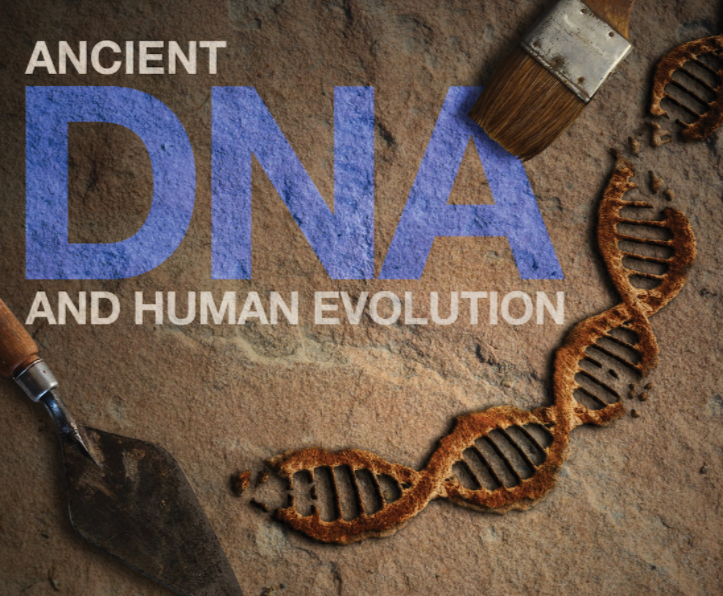
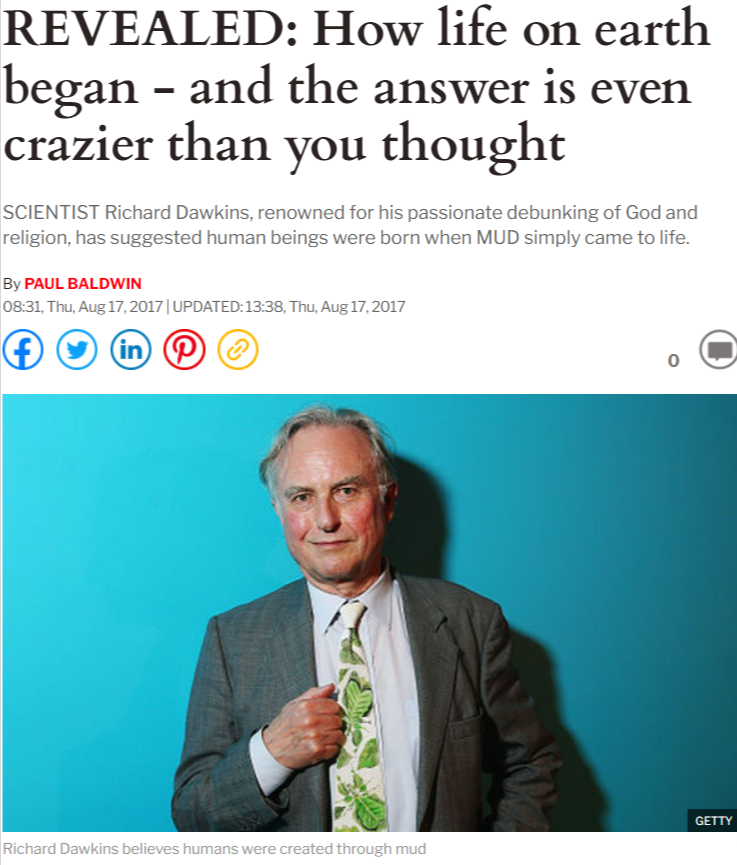
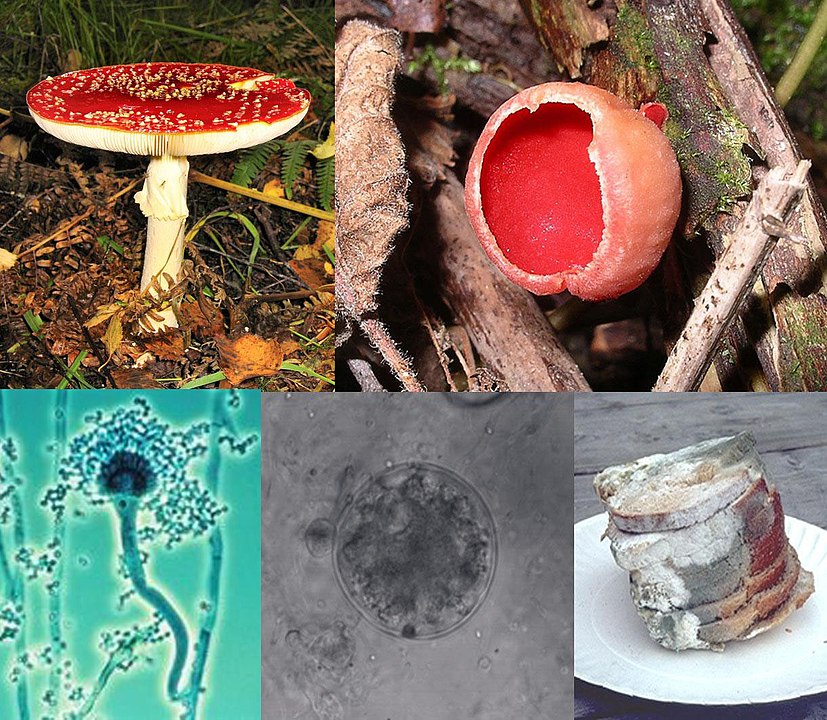
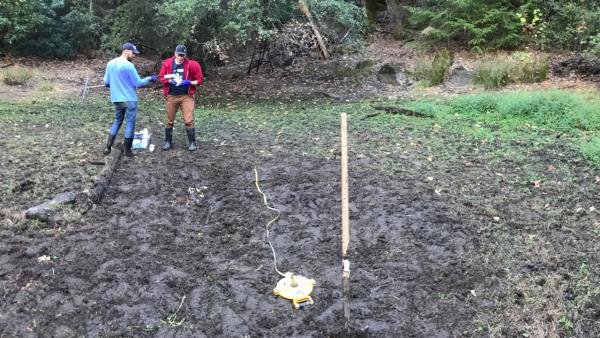
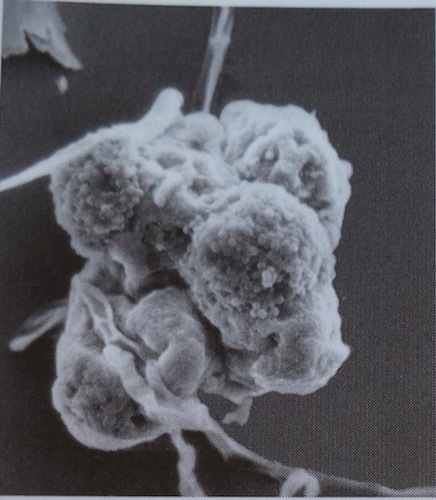
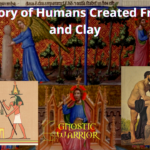

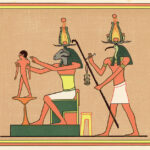
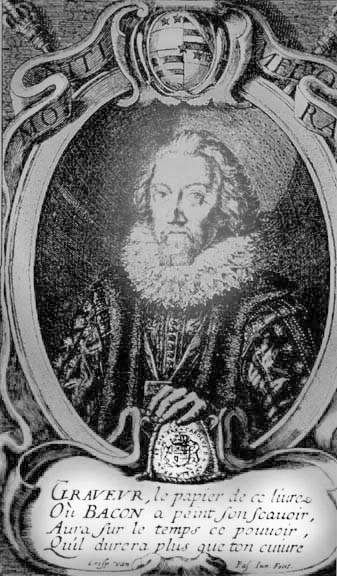

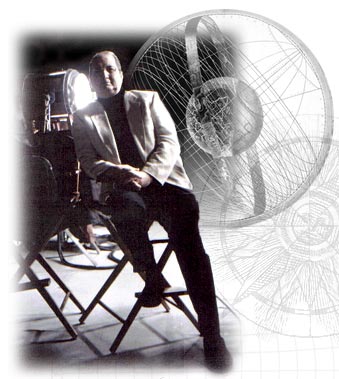
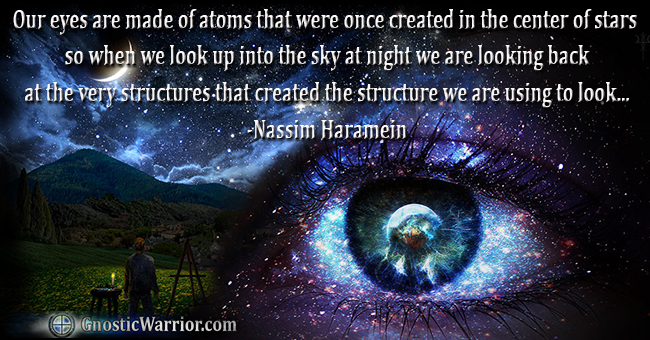

thank you gnostic warrior, for this site and your deep thoughts, on these things and relation to gods word. you expose, and do our fathers, real work, as he warned and , tells us, to do, , he wants us to know. thank you so much,
Our bodies are made from the stuff of the universe.
Our souls are made from the stuff of the Divine God.